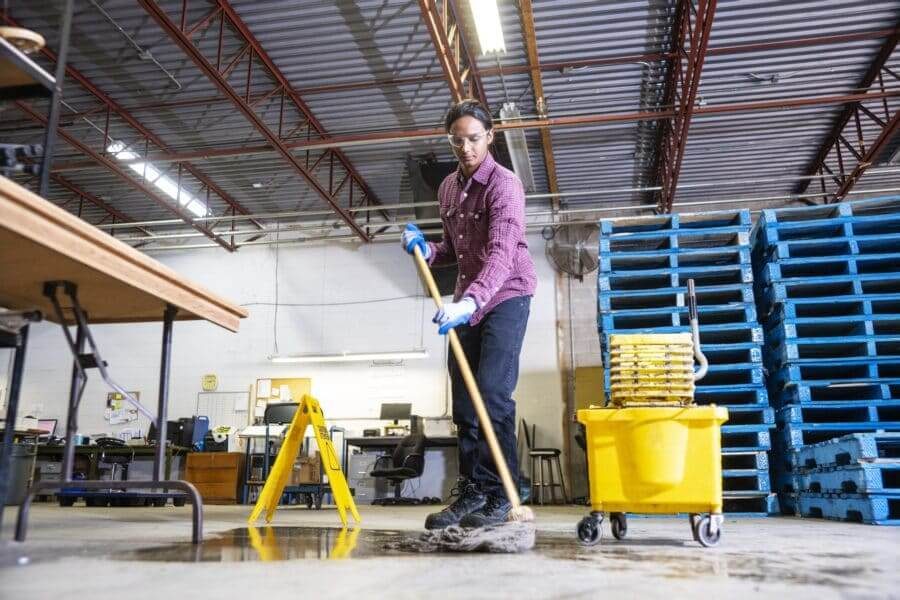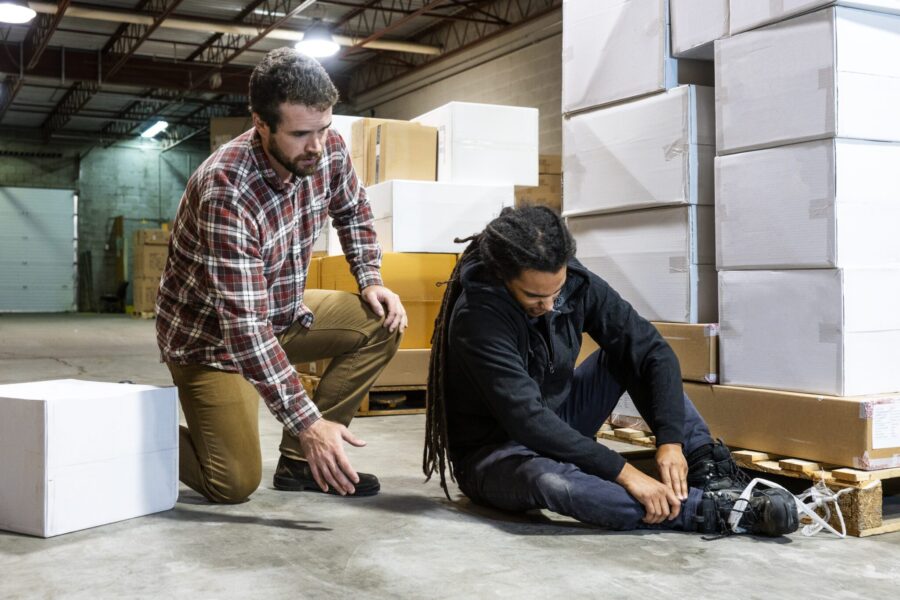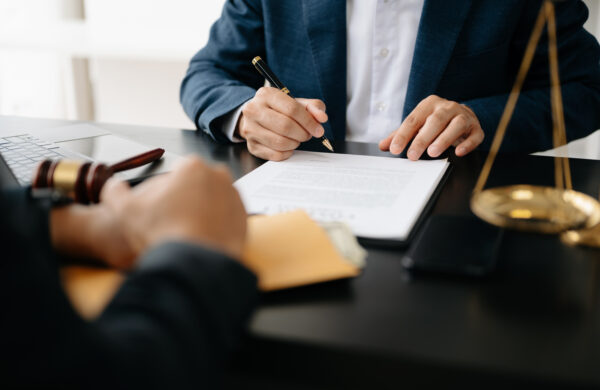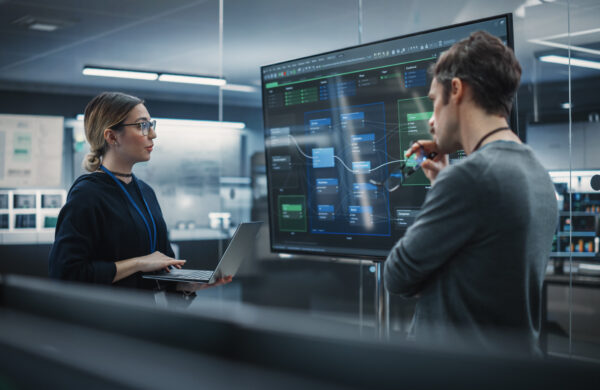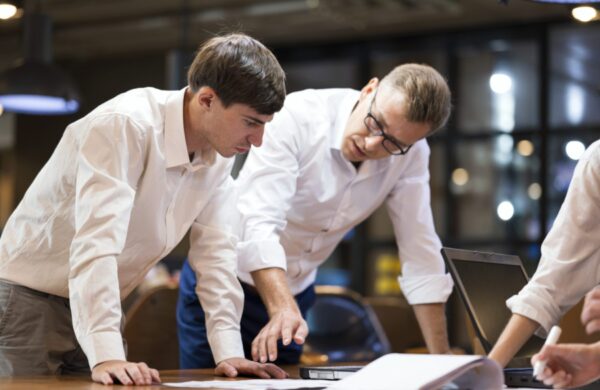Slips, trips and falls are a common cause of workplace accidents and can lead to serious injuries, lost productivity and costly insurance claims. As individuals, we all want to avoid being injured, however, as a business owner or worksite manager, it may be an important part of your job to take the necessary steps to prevent these types of accidents.
In this article, we will briefly review how the most common slip, trip and fall accidents occur. Then we will outline some practical steps that any business or homeowner can take to reduce the risk of slips, trips and falls on their property.
What is a slip?
A slip is an accident caused by stepping on a slippery surface. Indoor slips are often the result when worker or customer steps on a spilled product or a water leak in a kitchen or restroom. Outdoor slips may be caused by oil, water or other spills in a parking lot, as well as ice or other slippery surfaces on sidewalks, pathways or entry steps.
What is a trip?
A trip is an accident caused when a foot or leg is momentarily held back by an obstruction. Tripping accidents may also be caused by losing balance on an unlevel surface. Indoor trips are caused by loose carpeting, electrical cords, debris on the floor or even poor lighting. Outdoor trips are caused by unlevel paving, landscape clutter and many other tripping hazards.
What is a fall?
While slips and trips are same-level accidents, falls happen when the victim loses his or her footing or grip on one level and lands on another. By far, the most common type of workplace falls, both indoors and outdoors, occur while using ladders. Falls are also common from workplace scaffolding, warehouse shelving and warehouse loading docks.
The Business Cost of Slips, Trips and Falls
Each year, slips, trips and falls account for over $11 billion in employer costs. The average direct cost of a worker injury is $20,000, and the average cost to defend a legal claim is $50,000.
Secondary Costs of Slips, Trips and Falls
Beyond the direct costs, the employer loses the productivity of an injured worker, and the claim may cause the company insurance premium to be increased. If the accident is a customer or visitor, goodwill of the business may be harmed, and the cost of damages for liability may be much higher.
Is the business owner liable?
While a business cannot be held liable for conditions that occur outside its premises, such as ice on a sidewalk in front of the business, some courts have held that a walkway that leads only to a particular business can be its responsibility as well.
At the entry to either a home or business, the condition of steps and entry ramps connected to the building are definitely potential risks that are the responsibility of the owner, just as the owner is responsible for the safe condition of all floors, passages and spaces within.
Proven Ways to Prevent Slips, Trips and Falls
While not all accidents can be prevented, studies of accident statistics show that there are common causes, each suggesting a commonsense strategy for keeping workers, customers and visitors safe. Here is a list of proven strategies for preventing slips, trips and falls.
Keep Floors Clean
Regular vacuuming, sweeping and mopping are not just about looking good. Dust, dirt and debris cause many slips and trips. On any day, visitors might bring in mud, grease or paint on their shoes. Food may have been spilled in the kitchen, coffee in the hallway or hand soap in the restroom. Inspect both workspaces and walking surfaces, and make good housekeeping practices a standard policy.
Keep Floors Dry
Water will most often spill or accumulate in restrooms, kitchens and near entry doors. Employee break rooms should have non-slip flooring where food and coffee are prepared or where cups and dishes are washed. Entry doors should have absorbent mats as preventative measures for rainy or snowy days. Some businesses dispense umbrella bags to keep drips from creating unsafe conditions.
Eliminate Tripping Hazards
Make sure that floors in work areas are free of electrical cords, toolboxes, material cartons and other clutter that may be left in walkways. Inspect the actual flooring in both workspaces and walking areas for trip hazards such as loose carpeting, cracked tile or uneven surfaces. Repair as required.
Use Warning Signs
In areas where there is even a slight potential for slips, trips and falls, use signs to alert employees, customers and visitors to common hazards. This could include signs warning of wet floors, an uneven walking surface, open truck bays or other hazards.
Provide Proper Lighting
Take care to make sure that all walking surfaces are well lit and that all light fixtures are in good working order. Use floor lighting in areas where visibility may be poor. Fall prevention also requires adequate lighting. Use reflective tape in areas with poor lighting to delineate steps in a stairwell or to warn of an approaching change in level on a walking surface.
Use Abrasive and Absorbing Surfaces
Areas that are prone to slippery surfaces can often be improved with a rough surface provided by abrasive filled paint or pressure sensitive abrasive strips. Entries that get wet and pose potential hazards during rainy or snowy weather should use an absorbing mat for wet shoes.
Don’t Forget Outdoor Spaces
The owner of a home or business is also responsible for preventing slips, trips and falls in their outdoor spaces. Parking lots are a common location for slips and trip accidents. Inspect paving and repair potholes or cracks. Provide safe lighting. Use signs to warn of uneven ground. Keep walking areas and plantings clean and free of debris. Be sure that entry steps are no-slip in rain or snow.
Encourage Proper Footwear
In some businesses, employees should be required to wear well-constructed shoes with non-slip soles. Work procedures and company policies should prohibit sandals and other footwear that increase the chances of slip or trip. Depending on the nature of the business, some visitors and customers should be encouraged to wear non-slip shoes while on the property.
Use Handrails
In stairwells, loading docks or any other areas with a risk of falling, handrails should be used to provide support and stability. Check existing handrails to be sure that they remain securely anchored to the floor and are otherwise in good repair to provide walking support.
Cleaning and Maintenance Can Support Safety
Cleaning personnel should regularly check the condition of floors, stairs and other surfaces for damage or wear, reporting any issues for immediate attention from maintenance. A loose tile that is noticed while mopping can be repaired before it causes a costly tripping accident. Building maintenance should also regularly check switches, light bulbs, electrical cords and other equipment, removing any slip, trip or fall hazards.
Training to Prevent Slips, Trips and Falls
It is important for management to show all employees that the company places a high value on safety. Training can include accident prevention, cleaning up spills immediately, safe use of equipment, choice of proper footwear, how to protect walking surfaces from weather hazards, safe use of ladders and scaffolds, how to safely navigate slippery surfaces and how to identify and report hazards.
Create a Culture of Safety
Slips, trips and falls cost billions in medical care, liability claims, lost productivity and higher insurance and workers’ compensation premiums. However, business owners can protect both their team members and their bottom lines by creating a culture of safety. Appoint safety team leaders. Conduct regular safety audits. Make it known that safety is a top priority in evaluating performance results, for the company and all employees.
Link Safety to Quality
Safety training can almost always benefit from introduction to higher level workplace concepts such as the Five S, which teaches employees to Sort, Set in Order, Shine, Standardize and Sustain. The Five S can make an immediate impact on workplace safety, with continuing benefits for the quality of work output.
Post Emergency Procedures
In the event of a slip, trip or fall incident, all employees should have access to emergency procedures to ensure that appropriate medical attention is provided. Procedures should include safety protocols, emergency numbers, how to use safety equipment, location of the nearest emergency exit, location of the nearest emergency room, location of first aid supplies and instructions for providing first aid response.
Protecting Employees, Customers and Visitors
By following these practical strategies, any homeowner or business manager can significantly reduce the risk of slips, trips and falls on their property. While it may not be possible to completely eliminate the risk of these types of accidents, taking proactive measures can help to prevent injuries and protect the well-being of employees and customers.
Want help building a culture of safety? Our safety professionals can help.
